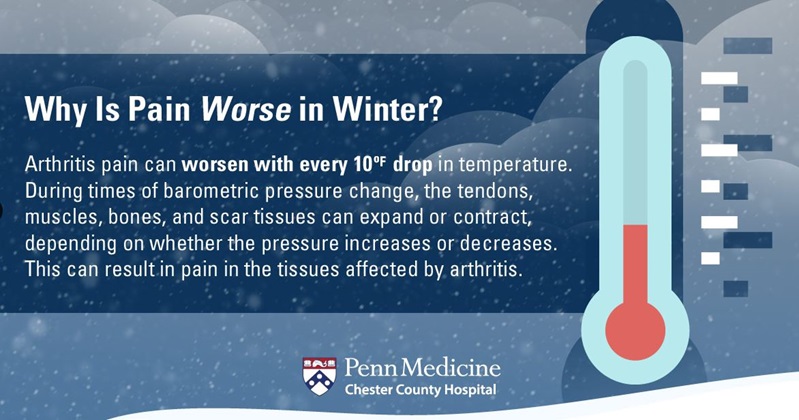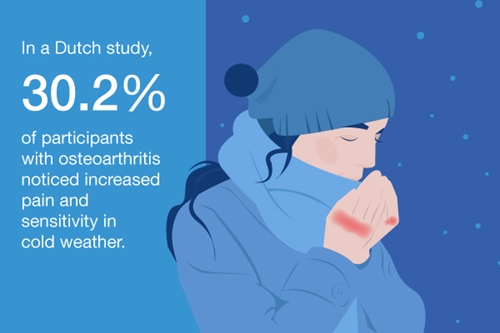Many people with arthritis find that changes in the weather can significantly affect their symptoms. Cold, damp weather often exacerbates joint pain and stiffness, while warm, dry climates tend to provide some relief. For those seeking a change of scenery and a potential improvement in their arthritis symptoms, Spain offers a compelling option. With its diverse climate zones and a variety of charming towns and cities, Spain has something to offer everyone. This article explores some of the best places to live in Spain if you have arthritis, taking into account climate, healthcare, cost of living, and local culture.

How Climate Affects Arthritis
Before diving into specific locations, it's important to understand how climate can influence arthritis symptoms. Research suggests that several factors can play a role:
-
Temperature: Cold weather can cause the fluid inside joints to thicken, leading to increased stiffness and pain. In fact, one study showed that pain increased with every 10-degree drop in temperature. Conversely, warmer temperatures have been associated with increased gout attacks and a worsening of some lupus symptoms.
-
Humidity: High humidity may exacerbate swelling in joints, intensifying pain.
-
Barometric Pressure: Changes in air pressure can cause tissues to expand or contract, potentially leading to discomfort.
-
Sunlight: While sunlight is a source of vitamin D, which is important for bone health, some medications for arthritis can increase sensitivity to sunlight. This is known as photosensitivity and is something to be aware of, especially for those with lupus.

Furthermore, it's important to note that the impact of weather on arthritis can vary significantly among individuals and may differ depending on the type of arthritis. For example, people with osteoarthritis generally prefer warm and dry weather, while those with rheumatoid arthritis tend to prefer cooler weather. Warm weather may also improve symptoms for some people with psoriatic arthritis.
In addition to the direct effects of weather on joints, other factors can contribute to increased pain perception. For instance, stretches of cloudy or rainy days may lead to low mood, which may cause people to focus more on their pain. On cold, rainy days, patients may also be less likely to be out and active, and a lack of physical activity is known to worsen joint pain and stiffness.
While the exact relationship between weather and arthritis is complex and varies between individuals, many people find that warm, dry climates offer the most relief.

Lifestyle Management for Arthritis
While climate plays a significant role in managing arthritis symptoms, lifestyle factors are equally important. Here are some key strategies for managing arthritis:
-
Stay Warm: If your joints don't like the cold, it's crucial to stay warm. This can involve layering up with warm clothing, using heating pads or electric blankets, and taking warm baths to help loosen stiff joint.
-
Get Moving: Regular exercise is one of the best things you can do to manage arthritis pain and keep your joints healthy. Physical activity helps boost energy, increase strength and flexibility, and release endorphins, which can help ease pain.
-
Stretch Regularly: Stretching, especially before and after exercise, can help loosen stiff joints and reduce the risk of injury.
-
Eat a Healthy Diet: A balanced diet rich in omega-3 fatty acids, found in fatty fish, nuts, and seeds, may help reduce inflammation. Limiting sugar and refined carbohydrates is also beneficial.
-
Maintain a Healthy Weight: Maintaining a healthy weight can significantly reduce stress on your joints, especially weight-bearing joints like knees and hips.
-
Ensure Sufficient Vitamin D: Vitamin D deficiency is common and can contribute to increased arthritis pain and bone loss. It's essential to get your vitamin D levels checked and supplement accordingly if needed.
-
Sun Protection: For those with photosensitivity or lupus, sun protection is crucial. This includes spending time in the shade, wearing protective clothing, and using sunscreen with a high SPF.
-
Monitor Weather Patterns: Keep an eye on the weather forecast and plan activities accordingly. The Arthritis Foundation even has a tool that helps predict the risk of weather-related discomfort for your area.
By combining these lifestyle strategies with a suitable climate, you can create a comprehensive approach to managing your arthritis and improving your overall quality of life.
Environmental Factors and Arthritis
In addition to climate and lifestyle, environmental factors can also influence arthritis. Research suggests that exposure to certain pollutants may increase the risk and severity of arthritis, particularly rheumatoid arthritis. For example, living in urban areas or near highways has been linked to an increased risk of rheumatoid arthritis, potentially due to exposure to pollutants like dioxin.
Furthermore, studies have shown that a combination of environmental factors, such as air and water quality, building type, and socioeconomic status, can contribute to an increased risk of arthritis. This highlights the importance of considering the overall environment when choosing a place to live with arthritis.
Warm and Dry Regions in Spain
Several regions in Spain stand out for their warm, dry climates, which can be particularly beneficial for people with osteoarthritis:
-
Andalusia: Located in southern Spain, Andalusia boasts a Mediterranean climate with hot, dry summers and mild winters. Cities like Seville, Cordoba, and Malaga offer a blend of cultural attractions, modern amenities, and a relaxed lifestyle. Seville is known for its scorching summers, with temperatures often exceeding 30°C. Cordoba, located inland, also experiences hot summers, with temperatures reaching 46.9°C in July 2017.
-
Murcia: Situated in southeastern Spain, Murcia is known for its semi-arid climate with low humidity and plenty of sunshine. The region offers a variety of coastal towns and cities with beautiful beaches and a relaxed atmosphere. Murcia reached a record temperature of 46°C (115°F) in July 1994.
-
Valencia: The southern part of the Valencia region, including the Costa Blanca, enjoys a warm Mediterranean climate with mild winters and plenty of sunshine. Cities like Alicante and Torrevieja offer a mix of coastal living and cultural attractions.

Cities with Good Healthcare and Infrastructure
Within these regions, several cities stand out for their good healthcare facilities and infrastructure:
Andalusia
-
Seville: Seville has major hospitals equipped with high-tech equipment and offers both public and private healthcare options. Seville is also renowned for its flamenco dancing, vibrant festivals like the April Fair and Holy Week, and a rich culinary tradition.
-
Malaga: Malaga boasts a range of excellent hospitals, including the Hospital Regional Universitario, Quirón Hospital, and Vithas Xanit International Hospital. As the birthplace of Pablo Picasso, Malaga has numerous museums and art galleries, and a lively atmosphere with a mix of traditional and modern influences.
-
Marbella: Marbella is home to some of the best hospitals in Spain, including the Hospital Costa del Sol and the Quirón Marbella. Marbella offers a luxurious lifestyle with beautiful beaches, upscale resorts, and a vibrant nightlife.
Murcia
-
Murcia City: Murcia has several well-equipped hospitals, including the Hospital General Universitario Virgen de la Arrixaca and the Quirónsalud Murcia Hospital. Murcia offers a blend of historical sites, natural parks, and a strong agricultural tradition with a focus on local produce and cuisine.
-
Cartagena: Cartagena has two major hospitals, the Hospital General Universitario Santa María del Rosell and the Hospital General Universitario Santa Lucía, offering a range of medical services. Cartagena is a coastal city with a rich maritime history, a well-preserved walled city, and a vibrant cultural scene with influences from Africa, Spain, and indigenous cultures.
Valencia
-
Valencia City: Valencia has a number of internationally recognized hospitals, including La Fe Hospital and the IVO oncology center. Valencia boasts a modern infrastructure with excellent transportation networks, including a high-speed train connecting it to Madrid.
-
Torrevieja: Torrevieja has a modern private hospital, Hospital Quirónsalud Torrevieja, and is also within easy reach of larger hospitals in Alicante. Torrevieja is a lively city with a mix of Spanish and international residents, known for its beautiful beaches, salt lakes, and a relaxed atmosphere.
Choosing the best place to live in Spain with arthritis depends on individual preferences and needs. However, based on the research, Andalusia, Murcia, and Valencia offer a combination of warm, dry climates, good healthcare facilities, affordable living costs, and a welcoming culture. Cities like Seville, Malaga, Cordoba, Murcia, and Torrevieja stand out as particularly attractive options.
It's important to remember that managing arthritis effectively often requires a personalized approach. What works for one person may not work for another, and it's crucial to consider your specific needs and preferences when making a decision.
Before making a move, it's highly recommended to visit different locations at different times of the year to experience the climate and culture firsthand. This will help you determine which location best suits your individual needs and lifestyle.
Ultimately, finding the right place to live in Spain can be a significant step towards improving your quality of life with arthritis.